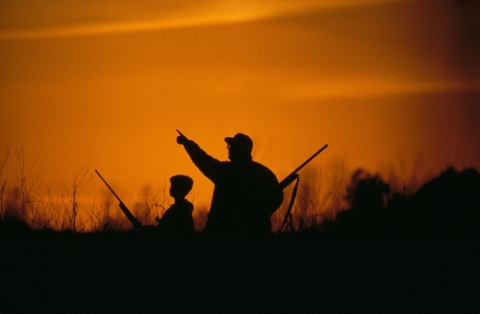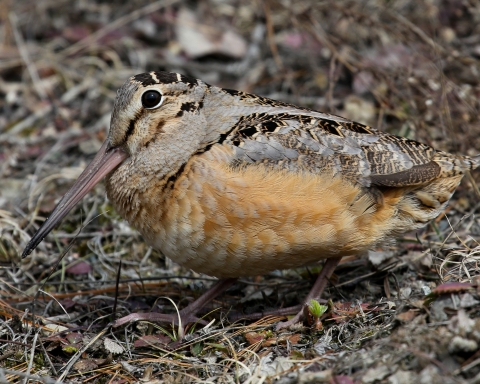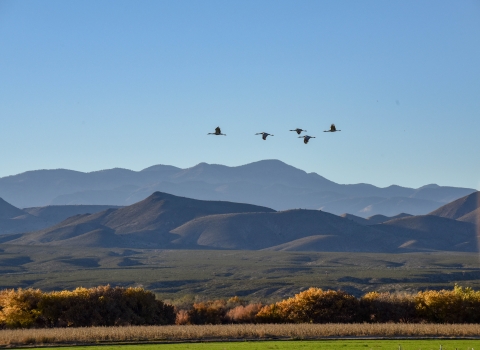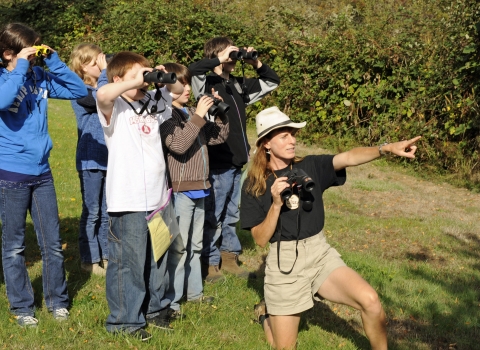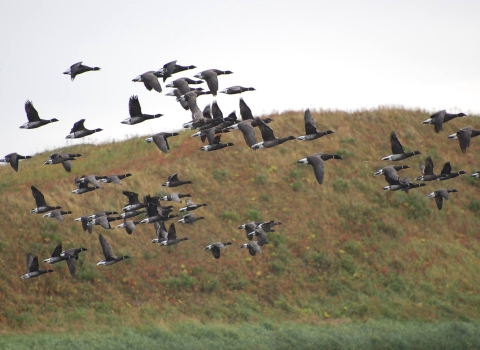In the cold of February, a bird was found dead on the sidewalk of Philadelphia, killed after colliding with a building window. It was an American woodcock, or timberdoodle – an iconic gamebird of eastern North America, adored by nature lovers and hunters alike.
According to the banding and encounter data managed by the U.S. Geological Survey’s Bird Banding Lab, part of the Eastern Ecological Science Center in Maryland, this woodcock was a female, aged two, banded in Concordia Parish, Louisiana in January 2023, just one year before its death.
We’ll never know the rest of this bird’s story – where it was heading, how many offspring it would have had, or how long it would have lived.
Though it is just one bird, it is one of a billion birds who are dying from window collisions each year across the country. Collisions are a leading cause in the loss of 3 billion birds in North America since 1970, indicating an alarming trend in the decline of our ecosystem’s ability to support even common bird species. Left unchecked, that number will grow.
As some of America’s most committed wildlife conservationists, the hunting community can play a key role in helping to reverse these trends. There are simple solutions available now to prevent collisions and give the beloved American woodcock – and all birds – a fighting chance into the future.
A story cut short
American woodcocks are a bird known for many things: their plump, mottled look and loud, buzzy “peent” call; a funky rocking walk worthy of internet stardom; and of course, their infamous “sky dance” courtship display, a spectacle of springtime that captured the heart of conservationist Aldo Leopold, as retold in his seminal 1949 work “A Sand County Almanac”:
“Up and up he goes, the spirals steeper and smaller, the twittering louder and louder, until the performer is only a speck in the sky,” he wrote. “Then, without warning, he tumbles like a crippled plane, giving voice in a soft liquid warble that a March bluebird might envy.”
Sadly, in the years since Leopold’s writing, they’ve earned a different reputation.
“Collisions are all too common for American woodcocks, especially during migration periods when they pass through large urban areas,” said Stephanie Egger, biologist with the U.S. Geological Survey’s Bird Banding Lab.
In Philadelphia, woodcock is one of the top five species reported by Bird Safe Philly’s citizen science bird collision project. Bird Safe Baltimore also reports them as a top five species.
This trend spells trouble for a species already in crisis; decades of research show that woodcock populations have declined by 1% a year since the 1960s, mainly due to loss of the young forest habitat they require. Recent research also suggests reducing woodcock collisions during migration could benefit woodcock populations.
Invisible threat
Glass windows are an invisible threat to birds. Windows reflect their surrounding environment – like forest, clouds or sky. Since birds cannot see glass the way we do, they do not treat it as a barrier to avoid, and instead fly directly into the glass.
This threat is exacerbated by the increasing prevalence of artificial light radiating across much of our nation’s landscape. Lighting coming from buildings and structures can both attract and confuse birds migrating at night – frequently resulting in collisions. In one instance in 2023, more than a thousand migratory birds were killed in one night after colliding with a single building in Chicago.
City high-rises aren’t only to blame, however; in fact, most fatal collisions happen at homes and buildings shorter than four stories tall, noted Joelle Gehring, biologist with the U.S. Fish and Wildlife Service.
“It might be easy to think this doesn’t apply to us as homeowners, but this is something that applies to everyone,” said Gehring.
“Birds are a daily reminder of our direct connection to nature, and I think everyone can agree we should do all we can to help protect them. Making buildings bird friendly is a simple action with immediate benefits,” said Pam Toschik, Assistant Regional Director for the U.S. Fish and Wildlife Service Northeast Region Migratory Birds program.
What you can do
There’s a simple and inexpensive solution to stop collisions: Patterns applied to the outside of windows to help birds see that glass is there.
- These patterns should be ¼-inch in diameter (or larger) and be placed no more than two inches apart from each other. Spacing patterns in a 2" x 2" grid is especially important for protecting small birds.
- Dark colored patterns can be difficult for birds to see when the window reflects dark colors, so it can be best to use medium to light colors for visibility.
As for artificial light, the answer’s as simple as the flick of a switch: turn off or reduce unnecessary lighting at night at homes and buildings. Reducing nighttime lighting wherever possible can benefit both birds and people.
It not only prevents unnecessary bird deaths but also reduces energy consumption, supports sustainability goals, and saves money.
Many communities and organizations across the country are already taking action through Lights Out initiatives to reduce the impacts of light pollution on birds and other wildlife. There are more than two dozen Lights Out programs nationwide, many of which are part of the USFWS Urban Bird Treaty Cities network.
Leading by example
As the premier wildlife conservation agency, the U.S. Fish and Wildlife Service is leading by example as we address the threat of bird collisions at our own facilities. Additionally, all new USFWS facilities are being constructed and managed to be bird friendly. It’s a proactive decision that makes environmental and financial sense in the long run, explained Toschik.
“It’s more cost-effective to build it right first, rather than create a problem that needs to be addressed down the road,” said Toschik.
The hunting community has a long history of migratory bird conservation that continues today. Preventing window collisions at our homes, offices, and community buildings is an opportunity for hunters and everyone to keep more birds on the landscape and to ensure a strong population for future hunting opportunities.
Don’t let the American woodcock’s magnificent sky dance be cut short; join us in the effort to stop collisions today.
Report a banded bird Banded bird encounter reporting data greatly informs our understanding of bird population decline and how collisions contribute. This data also helps researchers understand factors like migratory patterns, survival and reproduction rates, all of which help contribute to harvest quotas and help promote sustainable hunting. The North American Bird Banding Program receives more than 60,000 band encounter reports from hunters each year, almost 70 percent of all encounter types received – data which is essential for detecting changes in bird populations and for the development of appropriate hunting regulations. Learn more about bird banding and how to report banded bird encounters at https://www.usgs.gov/labs/bird-banding-laboratory. Hunters and others can report directly to www.reportband.gov. |
Learn more
Threats to Birds: Collisions (Buildings & Glass)
Threats to Birds: Collisions (Nighttime Lighting)
National Migratory Bird Harvest Survey
Notes from the Field: American Woodcock Migration | U.S. Geological Survey



